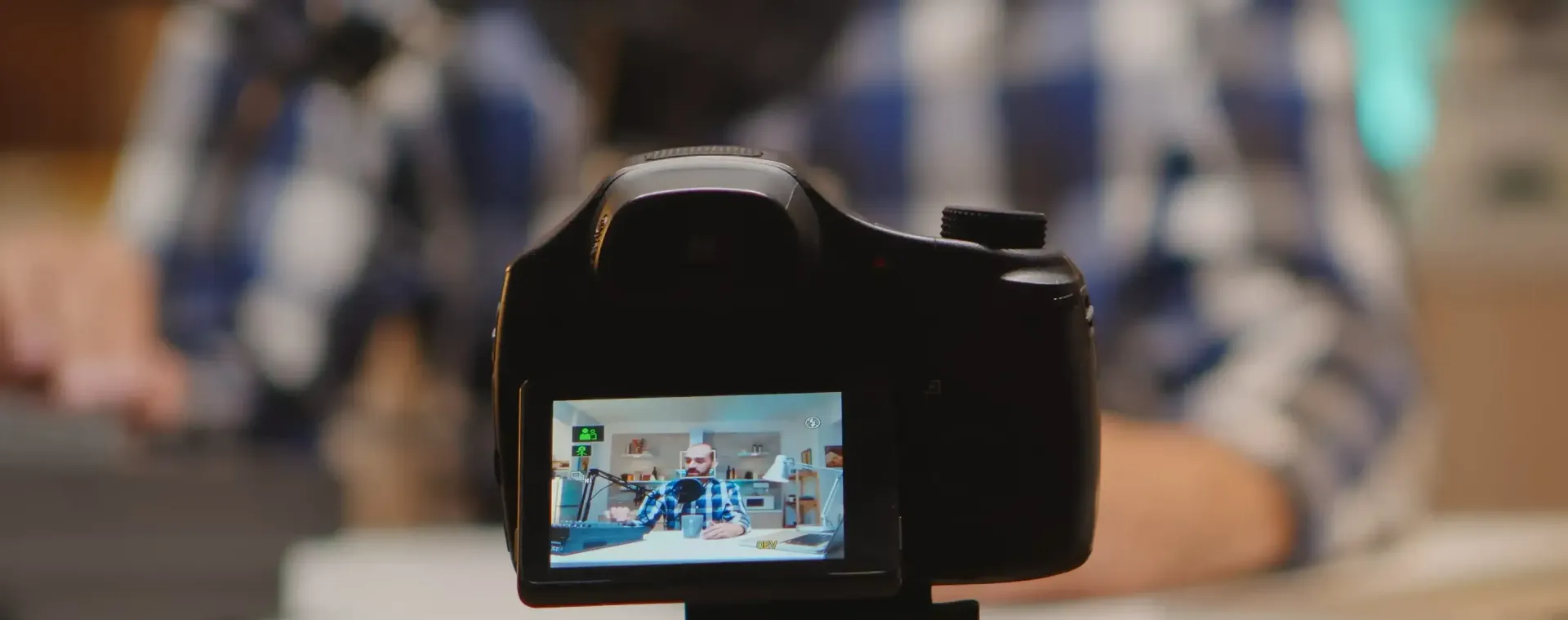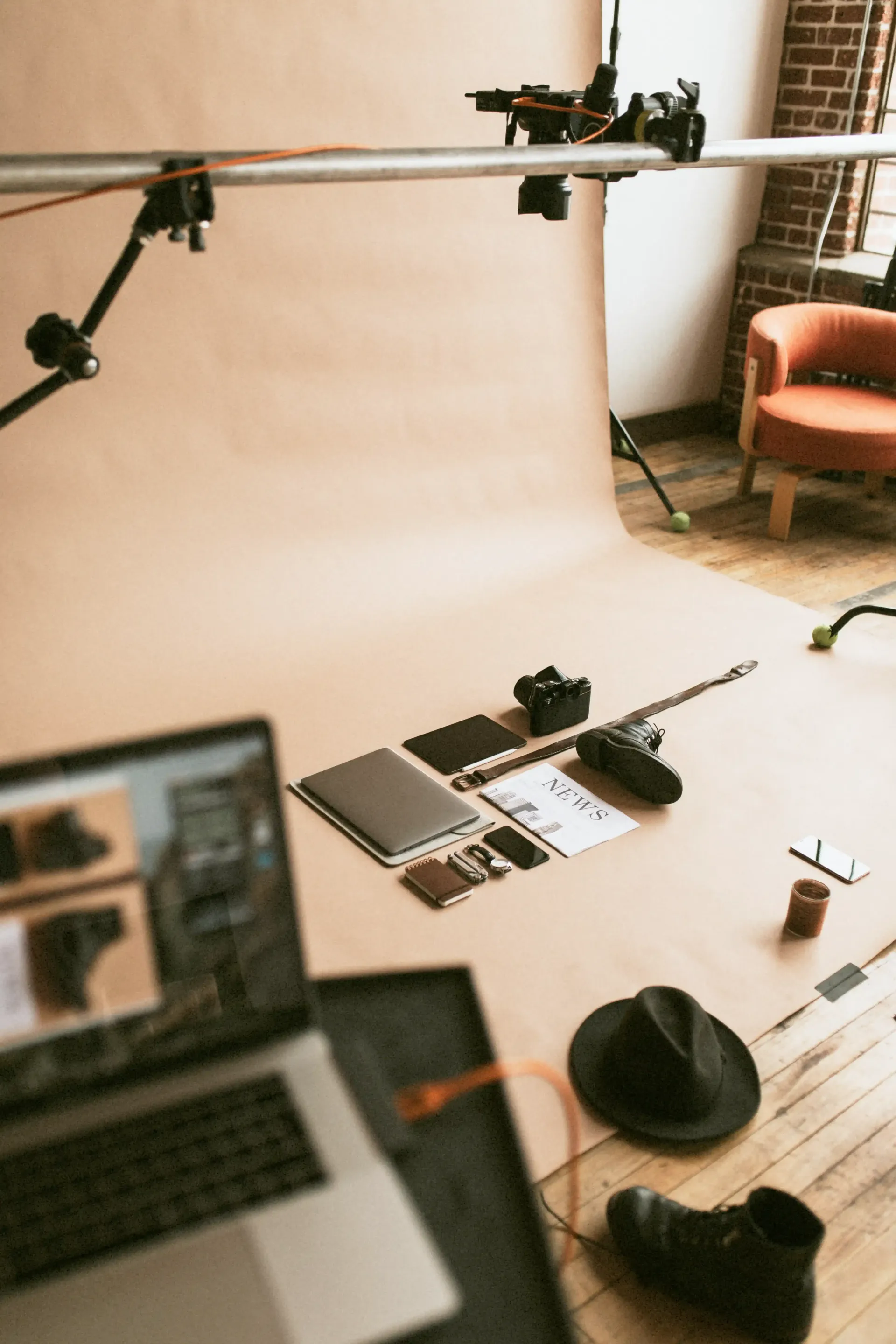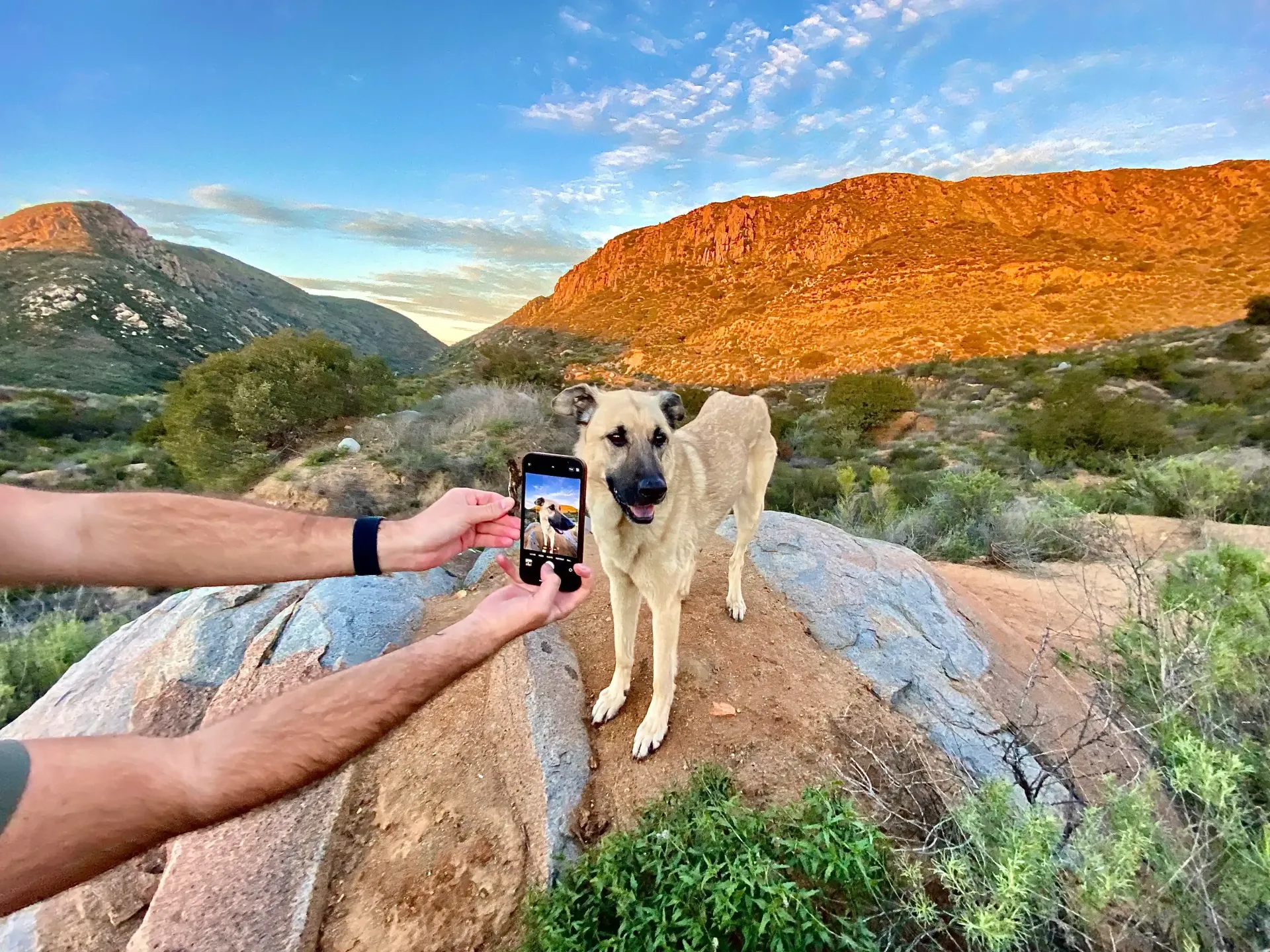Why SEO Is the Ultimate Freedom Tool for Content Creators

TL;DR
- Social media is borrowed attention. When you stop posting, your business stalls.
- SEO builds an evergreen content engine that drives traffic and leads while you rest.
- One blog post can outperform 100 social posts by ranking for months or years.
- You own the traffic, attract high-intent visitors, and create sustainable growth.
- With keyword research, internal links, and repurposed content, SEO becomes your most reliable marketing system.
Introduction
When I first started my fitness coaching business, I thought posting more often was the answer to everything.
Post more. Show up more. Work harder.
Every day was another reel, another carousel post, another caption.
Every week was a new scramble to adjust to the latest trend.
Every month I built my schedule and created content around social media algorithms.
For a while, it worked.
Until one day... it didn’t.
When I finally took a break from social media because of burnout, I realized something no one talks about enough:
A business built entirely on social media is a business built on borrowed land.
My leads slowed.
My sales dropped.
My momentum stalled.
And it wasn’t because I got worse at what I did.
It was because I was playing a game where the rules could change at any moment, and they often did.
That’s when I found something better.
Something that didn’t vanish when I needed a break.
Something that let my business keep growing even when I wasn’t “on.”
That something was SEO - search engine optimization.

The Cost of Not Owning Your Traffic
Here’s the scary part we often don't think about:
When you build your entire business on social media, you’re playing a dangerous game, and you may not even realize it.
Because when you rely only on social platforms like I did:
- You don’t own your followers.
They belong to Instagram, LinkedIn, Facebook. Not you.
If your account gets banned, hacked, or shadowbanned, you lose access. Overnight. - You don’t control your reach.
You can have 100,000 followers and still only reach 5% of them unless you pay for ads or go viral. - You're not guaranteed access to your audience.
Even your most loyal followers might not see your posts unless an invisible algorithm decides they should.
The truth is, the ground you're standing on feels stable... until it isn't.
And here’s where it gets even riskier:
- One algorithm update and your engagement can plummet without warning.
- One platform rule change and your business model could be wiped out.
- One hack, outage, or suspension and you lose months, even years of relationship-building.
We’ve seen it happen over and over again:
- Creators waking up to find their accounts suspended for no clear reason.
- Entire business launches flop because organic reach tanked days before.
- Hard-built followings vanish in an instant.
Not because they did anything wrong.
But because they didn’t own their traffic.

How Is Search Engine Optimization Different from Content Creation?
At first glance, SEO and content creation might sound like they’re the same thing.
After all, they are both mobile-friendly, involve writing, designing, search engines, and putting value out into the world.
But when you really step back, the difference is huge, especially if you care about building a business that lasts.
Here’s the heart of it:
Content creation (on social media) is about
feeding someone else’s platform.
SEO is about
building and owning your own platform.
When you invest in search engine optimization, you aren’t just throwing posts into the void, hoping for likes.
You’re building a real asset:
- You own your website. This is your own digital home base that no algorithm can take away, unlike other tools.
- You nurture your audience on your own terms. You do this through blogs, lead magnets, and direct email communication. There is much less competition here.
- You grow equity in your brand. Your content stays discoverable by search engine crawlers of the biggest search engines like Google for months or years after publishing.
Instead of chasing attention, you’re attracting people to a space that you control, on a timeline that fits your life. Not an app’s news cycle.
Want a how to guide that shows you how you can leverage SEO? Check out our blog post on how to get found by your target audience without posting daily by using SEO.
You Choose Your Playing Field with SEO Strategy
You don’t have to hope your posts get seen anymore.
You actively choose the keywords you want your website to rank for. Keywords that your ideal client avatar (ICA) is already typing into search engines, looking for solutions.
You’re not just gathering any audience. You’re bringing in high-intent visitors who are actively seeking help, guidance, or services like yours.
You create content for your website that answers a specific question your ICA has:
- It solves a pain point.
- It builds trust without you needing to be online.
- It positions you as the obvious choice when they’re ready to buy.
You’re not shouting into the social media chaos, hoping someone hears you.
You’re meeting your future clients exactly where they’re already looking.
You’re Playing the Long Game with the Tools to Win
Through SEO, you can optimize your website to consistently rank higher than competitors by:
- Performing in-depth keyword research choosing the right keywords to rank your website pages for. When you do this, your website will be found by your ICA. Pro Tip: Google keyword planner is a great tool for researching keywords!
- Providing high quality content with value consistently. Content that informs, empowers, and guides readers toward the next logical step with you.
- Publishing targeted blog posts focused on specific keywords and solutions your ICA needs.
- Creating smart internal links between related blogs and website pages to build topical authority.
- Writing alt text for every image. Not just for SEO, but for accessibility (helping users with screen readers and improving overall site usability).
These actions and more help your search rankings so you are found and trusted by your ICA.
That’s the Difference Between Content Creation and SEO
- One builds a following you might lose tomorrow.
- The other builds a business you can own for the long haul.
And when you’re ready to take time off, focus on a launch, or simply live your life offline, your SEO foundation keeps bringing people to your door.
It works while you rest.
Because you built it on your own land, not on borrowed ground.

How to Find Keywords That Attract High-Intent Traffic
Finding keywords is one of the most important steps for creating content that actually brings in the right people. Keywords are what people are searching for.
Here’s a simple, non-techy approach to find relevant keywords:
Start with Your Ideal Client’s Pain Points
What are they typing into search engines when they’re looking for help?
What words would
they use, not you?
Use Simple Keyword Research Tools
Tools like Ubersuggest, Answer the Public, Google Keyword Planner, and even Google’s own search bar autocomplete can show you exactly what people are typing into search engines.
Focus on Long-Tail Keywords
If you're writing a post for your blog, these keywords are your friends. They are longer, more specific phrases like:
- “how to grow a coaching business without Instagram”
- “email marketing tips for personal brands”
- “website SEO basics for beginners”
Use Related Keywords
These are keywords that are topically relevant and logically related. They are different keywords that your ICA would likely search for to find a solution to their problem.
Using keyword research tools like those mentioned previously make it easy to find related keywords that your ICA is using.
Look for Buying Intent
Keywords that include words like “hire,” “best,” “services,” and “coach” often signal someone ready to make a decision.
When you find keywords that match your audience’s mindset, you don’t have to scream for attention anymore.
They find you.

High Value & High Quality Content vs High Effort Content: Knowing the Difference
Once you define your keywords, it's time to write the content using those same keywords. Let’s talk about a trap many creators fall into:
Believing that high effort automatically equals high quality and value.
You can spend five hours editing a reel and still deliver nothing truly valuable or generate any search volume.
You can spend an hour writing a blog article that answers your target audience's questions and ranks for years, boosting your business for the long term.
When you realize that a five-hour reel might not deliver real value or search traffic, but an hour spent on a blog post can transform someone's business, focusing on SEO content makes sense.
High quality and high value content:
- Addresses a real pain point.
- Provides a real solution or insight.
- Moves your reader one step closer to a goal or transformation.
It’s not about how long you work on it.
It’s about how deeply it helps the person on the other side.
Some of the highest value blog posts I’ve ever created were ones that felt almost too simple:
- Answering one common question in depth.
- Breaking down one small process into easy steps.
- Sharing one powerful mindset shift.
If you aim for high quality and value, you’ll create relevant content and never run out of ways to serve your audience. Search engines will love you for it.

Why a Single Blog Post Can Outperform 100 Social Media Posts
Here’s the reality I wish I knew sooner:
One blog post can outperform 100 social posts.
It’s not because blogs are "better" than social media content.
It’s because they’re
designed differently.
Social media content is built for:
- Immediate attention
- Quick engagement
- Short-term relevance
A blog post, on the other hand, is built for:
- Long-term discoverability
- Solving deeper problems
- Attracting high-intent readers
When someone searches for an answer on Google, they have high search intent. They’re in a very different mindset than someone scrolling Instagram.
A great blog post doesn’t just entertain—it educates, builds trust, and invites action.
And it keeps working to bring more traffic while you sleep.
A single post on your blog, properly optimized, can:
- Be a free tool to bring in organic traffic for years.
- Capture email leads without constant promotion.
- Nurture readers into buyers through interconnected links.
- Be a source that brings you high-quality links to use as backlinks in the future.
Internal Links: The Secret Weapon That Grows Your Website (and Business)

Internal links are one of the most overlooked but powerful tools in SEO.
Think of each page of your own website and each post on your blog as a piece of your ecosystem.
When you connect your web pages through strategic linking, you’re doing two powerful things:
- Creating a natural journey for your reader
They don’t just find one piece of helpful, quality content. They find five.
They go deeper into your world, learning, trusting, and connecting more with every click. - Helping Google understand your site’s structure
Internal links show search engines how your topics relate to each other.
This helps your entire site rank better, not just individual posts.
Smart internal linking also keeps people on your site longer, which boosts SEO signals like dwell time and reduces bounce rate.
Examples of easy internal links:
- Linking a blog article about “SEO basics” to one about “how to find keywords.”
- Linking an article about “content repurposing” to one about “avoiding duplicate content.”
What Happens When You Repurpose Existing Content for SEO?
If you already have top notch social media content, email newsletters, podcast episodes, or video scripts—you’re sitting on a goldmine that needs to be incorporated in your SEO strategy.
Repurposing existing content is one of the fastest ways to start optimizing, build your SEO foundation, and boost your SEO rankings.
How to do it:
- Take a popular Instagram post and turn it into a highly relevant post on your blog.
- Take a podcast episode and create fresh content, like a detailed how-to article.
- Take a series of emails and drive traffic by creating a downloadable guide (which can also be a blog post).
Repurposing doesn’t mean copying and pasting.
It means expanding, enriching, and optimizing content for a new platform.
You’re layering in keywords, adding depth, sharing personal experience, connecting it to other posts with links, and giving it a second (or third) life, which offers the most value. This is what search engines like.
If you’re feeling overwhelmed by the idea of seeing SEO results and starting SEO from scratch, don’t.
You already have existing content that’s ready to work harder for you.

How to Avoid Duplicate Content Issues While Repurposing
If you’re repurposing content for SEO, you have to avoid duplicate content issues for SEO success.
Google needs to see each blog as unique and valuable, not just a carbon copy of another page.
Here’s how to do it right:
Expand on the Topic
Turn a short social post into a full, detailed blog article with examples, step-by-step advice, and deeper insights.
Update and Refresh the Examples
Tailor the content to fit the blog format, adding context that wasn’t needed on social.
Change the Angle Slightly
If your original post was about “why SEO matters,” maybe your blog post is about “how SEO gives creators freedom.”
Use Canonical Tags
If you do republish similar articles elsewhere (guest posts, for example), use canonical tags to show Google which version is the original.
By thinking like a strategist, not just a creator, you can safely repurpose without hurting your SEO.

Content Strategy: Building a Business That Works Without You Being “On” 24/7
When you have a real content strategy, everything gets easier:
- You know exactly what topics to write about.
- Your web pages rank higher on search engines.
- You build blog posts that connect naturally with internal links.
- You nurture visitors through a logical journey toward your offers.
- You repurpose with clear direction.
- You grow without burning out.
An SEO-first strategy for content isn’t about doing more.
It’s about doing the right things—the right way—the first time.
It’s the difference between building a house out of sticks… and building one out of stone.
It’s how you go from feeling like a content machine to feeling like a CEO.
Common Myths About SEO for Content Creators
If you’re a content creator new to SEO, you’ve probably heard a few things that make it sound overwhelming.
Let’s clear up some of the biggest myths:
Myth 1: "SEO Is Only for Big Companies."
Truth: SEO is actually more powerful for small creators because your website and blog posts can target very specific niche audiences—and win.
Myth 2: "SEO Takes Years to Work."
Truth: While SEO is a long-term play, early momentum often happens within a few months. Blog posts can start ranking sooner when you target the right keywords, create quality content, and build strategic linking internally.
Myth 3: "Blogging Is Dead."
Truth: Blog posts are evolving, not dying. People scour search results for answers and great content every day. And those searchers are often closer to buying decisions than casual scrollers on social media.
Myth 4: "You Have to Be Super Technical."
Truth: Basic SEO, the kind that moves the needle, is mostly about understanding your audience, writing helpful content, and optimizing smartly. No coding experience required.
If you can create social media content, you can learn SEO-driven content creation.
It’s just a new platform that YOU own, not a new skill set.

How Long Does It Really Take for a Website Page or Blog Post to Rank?
If you're thinking SEO is too slow, let’s talk reality:
- Most website pages and blog posts start gaining traction within 3–6 months when optimized well.
- Competitive industries might take longer, closer to 6–12 months, but the momentum compounds once it starts.
Factors that speed things up:
- Consistent content creation. Create quality content for your website and blog regularly.
- Smart internal links between related posts.
- Targeting realistic, less competitive long-tail keywords that match what your ICA searches for.
Think of SEO like planting a garden, not throwing a fishing line.
You nurture it a little at a time, and then the harvest comes all at once.
The sooner you plant, the sooner you grow.



Final Thoughts: Why SEO Gives Creators Their Time (and Energy) Back
You don’t have to
quit social media completely.
You don’t have to disappear from the platforms where you’ve built connection and trust.
But if you want a business that thrives even when you step away?
If you want a business that doesn’t crumble when you take a weekend off?
If you want a business that grows while you sleep?
You need a foundation that’s bigger than any algorithm.
You need SEO.
One relevant keyword at a time.
One original content post on your blog at a time.
One internal link at a time.
One piece of high quality content at a time.
If you’re ready to build a business that works while you live your life, without working harder just to stay visible, we’re ready to help.
👉 Book Your Free Strategy Call
If you don't control your traffic, you don't control your freedom.
What would your life look like if SEO handled the heavy lifting?
Let's build your SEO ecosystem and hand you back your time, energy, and life.












